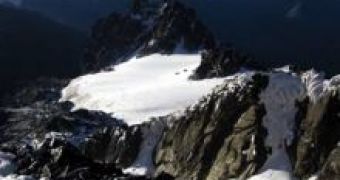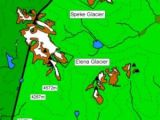The Rwenzori Mountains - also known as the "Mountains of the Moon" - span across the border between Congo and Uganda. Besides their spectacular and rare plant and animal life they are one of the four remaining tropical glaciers outside of the Andes and are a popular tourist attraction. However, scientists say that in two decades from now the glaciers would be totally gone. They are melting into several lakes and eventually flow into the Nile.
When they were first surveyed a century ago they were estimated to occupy about 6.5 square kilometers. Today the glaciers have only about one square kilometer, and the entire area covered by ice was cut in half from 1987 to 2003.
The latest field surveys and satellite mapping, conducted by the University College London, Uganda's Makerere University, and the Ugandan Water Resources Management Department, have now shown that some of the glaciers are receding tens of meters per year. Researchers say these glaciers will disappear within the next 20 years.
"Recession of these tropical glaciers sends an unambiguous message of a changing climate in this region of the tropics," said study leader Richard Taylor of the University College London. "Considerable scientific debate exists, however, as to whether changes in temperature or precipitation are responsible for the shrinking of glaciers in the East African Highlands that also include Kilimanjaro [in Tanzania] and Mount Kenya."
Scientists say that, despite its negligible contributions to greenhouse gases through the burning of fossil fuels, Africa will be the continent most affected by global warming. Other studies have shown that Kilimanjaro will also lose its multi-climate structure. Besides losses in tourism, such changes will dry Africa's rivers which are fed in part by glacier water. Fortunately, this will not happen in this particular region: due to the small size of the remaining glaciers in the Rwenzori Mountains, glacial recession is not expected to affect alpine river flow.
However, researchers remarked that the disappearance of the glaciers will probably affect the local traditional belief systems which are based on snow and ice, locally known as "Nzururu."
"Furthermore," Taylor said, "the rise in air temperature is consistent with other regional studies that show how dramatic increases in malaria in the East African Highlands may arise, in part, from warmer temperatures, as mosquitoes are able to colonize previously inhospitable highland areas."

 14 DAY TRIAL //
14 DAY TRIAL // 
